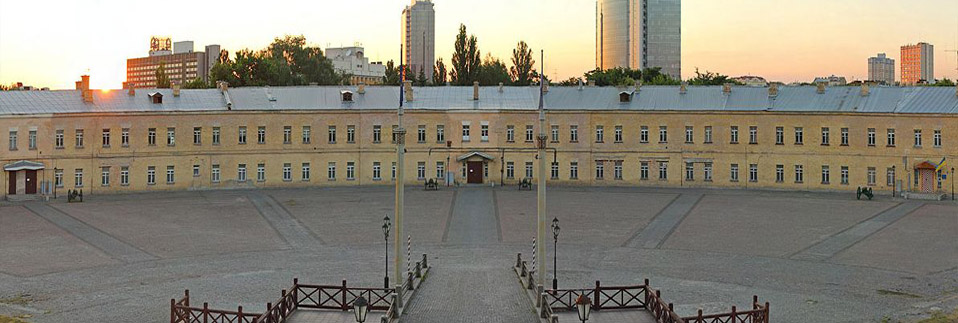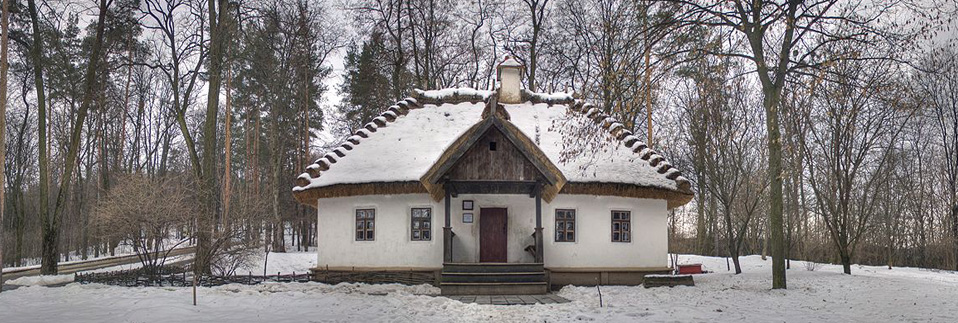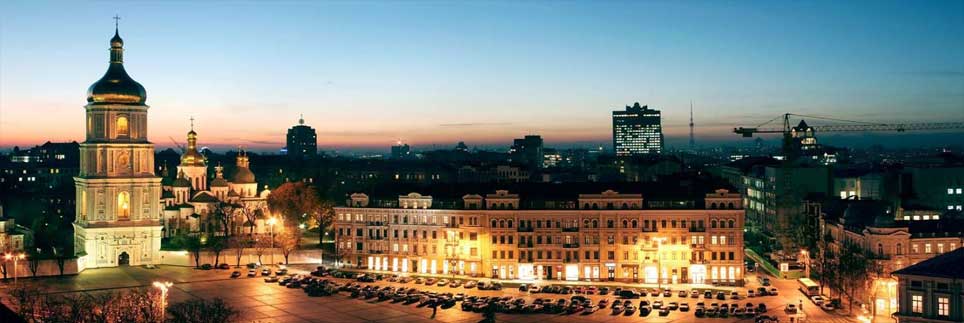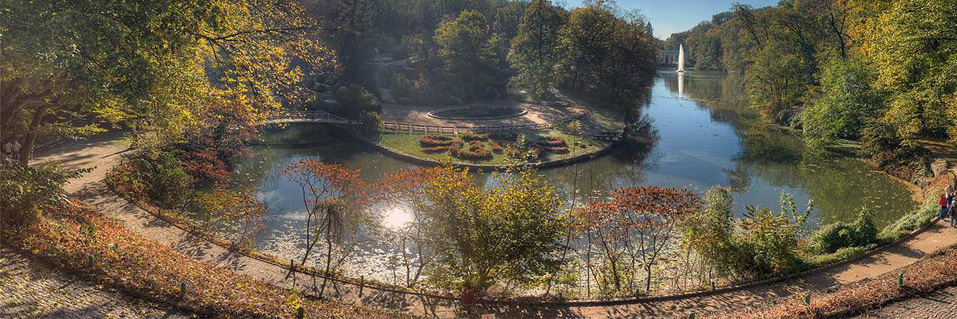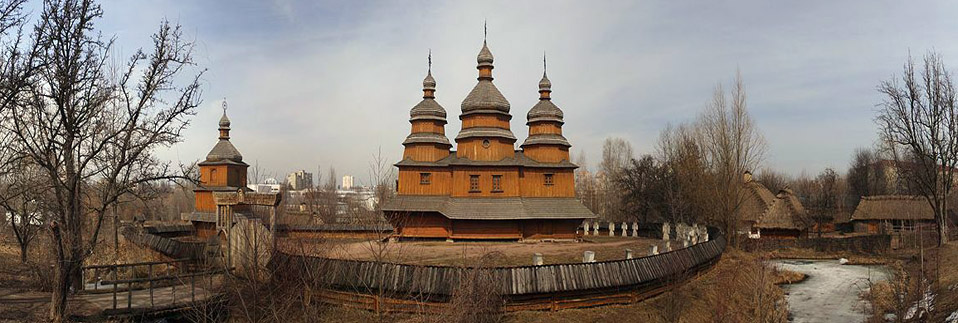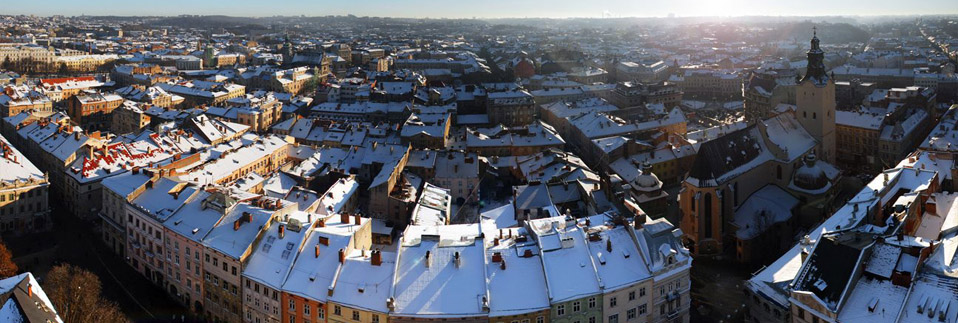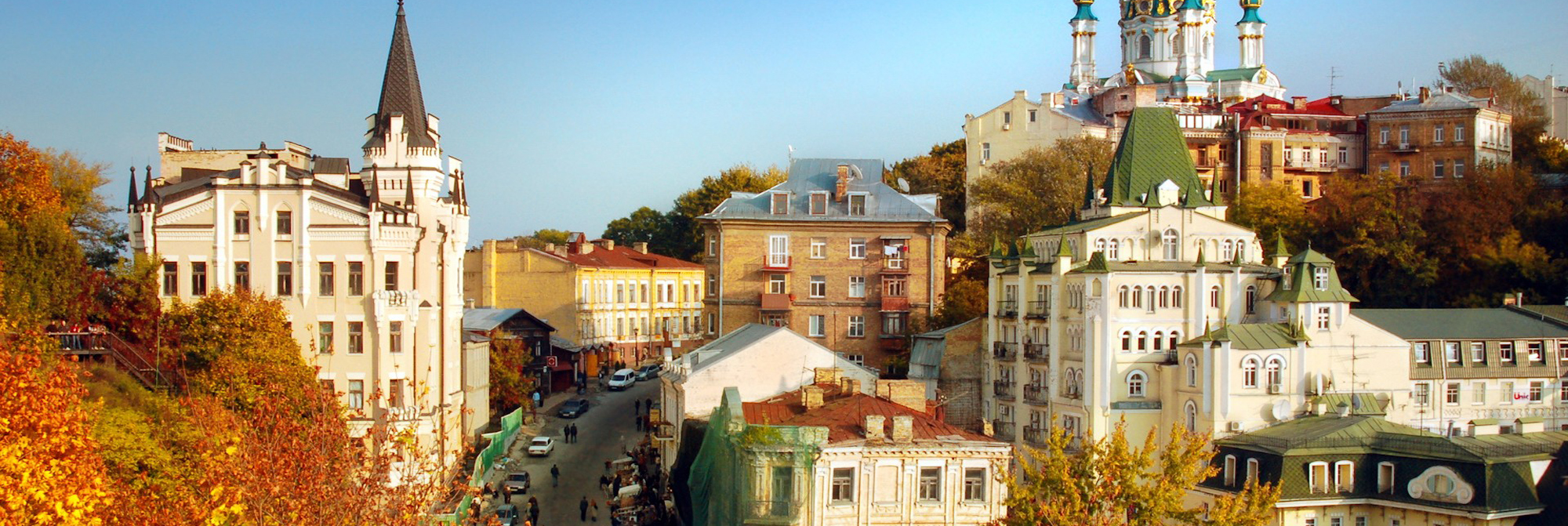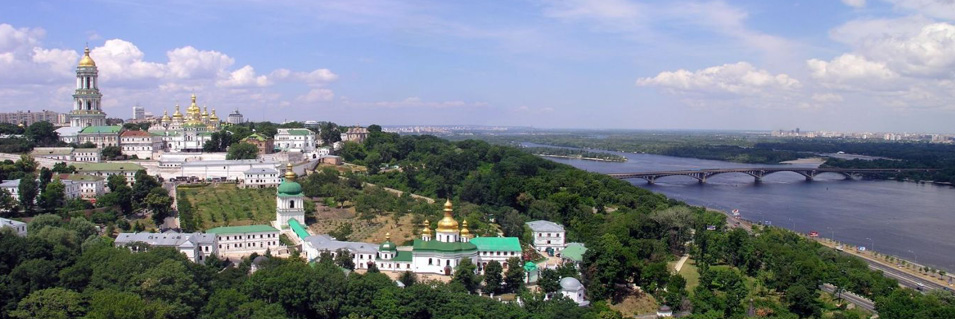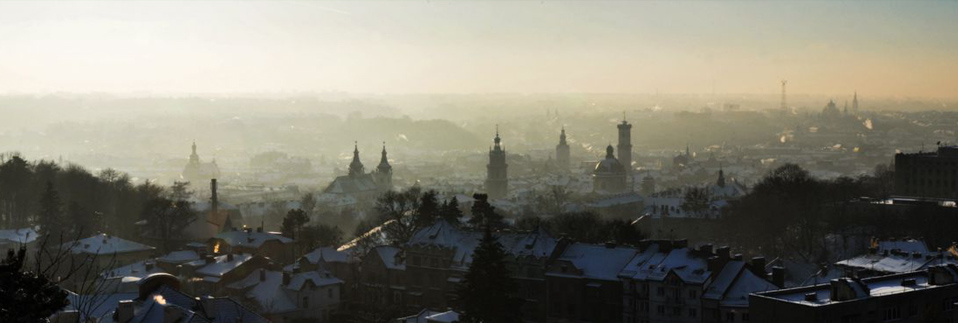Lugansk Region
Places of interest and sightseeing and Lugansk Region
Lugansk is the capital of the region that bears the same name. Its population to-day is half a million. It is situated on the banks of the rivers Olhovka and Lugan, that later gave the name to the city. Its ancient history is inseparable from the history of the whole region but the real history of Lugansk, as a city, started at the end of the XVIII c. when Russia successfully won a number of Black Sea wars. A wide access to the Black Sea, the annexation of Crimea as well as a chance of using the rich natural resources of the Azov Sea territories, stipulated a need of fortification of the southern borders. The fortresses and the fleet needed cannons. Industrial Ural was far off, and Russian Government decided to construct a plant close to the Black Sea shore.
Although the coal was discovered in this area at the time of Peter the Great, it was not until 1795 that an Englishman, Carl Gaskoin (from Scotland), established here its first iron-works. It supplied the Black Sea fleet and the southern fortresses with guns, gun-carriages and shot shells. "Godfather" of Lugansk foundry plant was a commander-in-chief of the Black Sea fleet, Admiral Nickolai Mordvinov, and "godmother" was Empress Catherine II, who signed in 1795 the edict on the settlement of foundry plant on the river Lugan. After close study of the natural deposits Carl Gaskoin offered to manufacture cast iron cannons, rather then copper ones.
The plant was built in rather short term and in 1800 the first blast-furnace in Ukraine smelted the cast iron. The ore was local and the coke coal was extracted in Lisichansk. But the ore and the coal were of rather poor quality or maybe the workers were not so experienced, and soon the production of cast iron was stopped. In 1812 during the Russian-Napoleon war Lugansk plant resumed its activity and produced the canons and canon-balls. During the Crimean war (1853-1856) it continued to produce the ammunition. When the Crimean War ended the plant started to produce agricultural implements, steam-engines and machinery for beetroot for sugar-works.
The “Lugan plant” grew and alongside the settlement of the same name became bigger and bigger. By the 1830-ies there were already nearly 200 private houses and a number of the barracks, the population was very international: amongst the workers there were Russians, Ukrainians, Poles, Byelorussians, Tartars and Jews. Each nationality tended to save their own traditions, customs, but gradually merging, they formed some particular flavour of the town. The international character of the population was reflected in numerous temples and religious congregations. There were more than 10 Russian Orthodox churches, two Synagogues (the Jews made 20% of the population), several Baptist praying houses, Roman Catholic and Armenian churches, for the Germans a Lutheran church was constructed. To great regret all these buildings that had a great value as architectural monuments were destroyed in the 1930-ies during the years of militant atheism. The only church that survived but was greatly damaged is Peter and Paul church in the oldest part of the city, in Kamenny Brod (“Stone Ford”) district.
The town was built without an officially confirmed plan. All vertical streets were identified as lines, as in Saint Petersburg, and all horizontal ones had names. The most first street of the city was English Street. Foreign specialists who arrived to work at the plant settled there. A mansion for the director of plant Gaskoin was built there. On the same street, in the family of a factory physician, Vladimir Dal, the author of "The Defining Dictionary of the Great Living Russian Language", a close friend of the great Russian poet Alexander Pushkin, was born in 1801.
In 1882 Lugansk plant with the nearby village Kamenny Brod got the status of town and in 1889 it officially was named “Lugansk”. In 1870-1890 wide net of the rail roads was constructed in the South of Russia. And again Lugansk gained an advantage of its location. In 1896 a German manufacturer Gustav Gartman founded the “Russian Company of the Machine Building Plants of Gartman” that started the construction of the biggest in Russia steam railway engines plant. In 10 years it produced every fifth steam engine in the Empire, its products were exported to 30 countries. To-day it is a diesel-locomotive-building plant whose products are known in many countries of the world.
At the beginning of the XX c. Lugansk had confirmed itself as a large industrial centre, as a city with its own multinational traditions and particular mode of life.
The working people of Lugansk took an active part in the Revolution of 1917. One of the Political leaders and Marshal of the Soviet Union Voroshilov worked here as a steel-worker and in 1918 he raised the first military Red Army detachment in Lugansk against the Hungarian military forces. In 1938 the city was named after him. In 1958-1970, when Voroshilov fell into political disfavour, the city returned its old name of “Lugansk”. In 1970-1990 again it was renamed as Voroshilovgrad and in 1990 the city reverted to its former historical name.
During the Great Patriotic War the city was severely damaged and practically everything, what one can see to-day in Lugansk, was constructed in the post-war years. The most visited sites of the city are:
- Regional Museum of Local Lore, its modern building is one of the architectural attractions of the city;
- Regional Art Museum;
- Museum of History and Culture of Lugansk city;
- Of special interest is the open air museum of stone statues near the Pedagogical University. There are about 70 sculptures, they are over 700 years old and they have been collected for 25 years in Lugansk region;
- Monument to the Fighters for the revolution;
- Monument to “Lugansk Worker”
- Monument to Marshal Voroshilov (1881-1969) has long become a Symbol of the city;
- Memorial house-museum of Vladimir Dal who was an outstanding representative of his time - specialist in lexicology and dialects, author of fundamental dictionary of Russian language, surgeon and writer, an engineer, a man of encyclopaedic knowledge. Not far from the house is the monument to him which is called “Lugansk Cossack” – it was the Dal’s name.
- The house of the technical progress
Among the latest constructions are the St. Vladimir Cathedral and Monument to those who perished in Afghan War. Cossack Centre with a choir is often visited by the travelers, and now a big Cossack tourist centre “Lugari” is planned to be constructed not far from the city. Lugansk is a very multinational city, 104 nationalities and peoples live here.
Lugansk is not only a beautiful city with parks, public gardens and memorial places, but also one of the largest industrial centres of Ukraine. Its enterprises have been unique and famous all over Ukraine and abroad. To those leading enterprises that were mentioned above one can add the JSC "Lugansk Pipe Plant" that produced the pipes of all sizes and profile. One of the perspective industries of regional economy is the machine-building. The city produces different fertilizers. Quite new but perspective is the JSC "Lugansk Plant of Rescue Equipment "Horizon" that produces anesthesia medicaments and unique hose respiratory vehicles. Food and light industry are also well developed.
A unique town of Lugansk region is Lisichansk. It is situated 95 km away from Lugansk in the north-western part of the region on the high right bank of the Seversky Donets river. The location of the town is interesting. Climbing up on the hills and hights, rolling down into the ravines, valleys and depths, the town has picturesquely splattered upon the northern slopes of the stone range, hanging above the river. This lovely place used to be called Sokol (Falcon’s) Mountains. To-day its population numbers 112,600.
The settlement appeared in 1795 on the place of the former cavalry regiment quartering that had existed here already for some decades. The first coal was discovered here in 1721 by engineer Kapustin. A monument to this geologist was unveiled in 1960 in the centre of the town. He is standing with a piece of anthracite and a miner’s pick in his hands. The edict of Catherine II initiated the opening of the first mining pit in Lisichansk - the first one in the whole Donbas basin. It appeared as the first miners’ village of Donbas. Here the industrial coal mining in Ukraine and Russia in general began. And till 1802 these deposits where the only ones in Donbas. In 1890 the Russian-Belgian enterprises started to operate.
Here in 1892, again for the first time in Donbas, a new branch of industry - chemical, appeared. And in the 1880-ies the first private glass plant was opened. Lisichansk glass plant successfully functions now.
In 1954 a cable road of 16,563 m long was constructed, it unites the chalk quarry with the plant. It is the longest in Europe and the second in the world after the Canadian one. The "Lisichansk Industrial Rubber Plant" is one of the biggest in Ukraine and its products such as the conveyor rubber-fabric ribbon are of high demand not only in Ukraine.
On August 23, 1939 the so-called “Nonaggression Pact between Germany and the Soviet Union” was signed in Moscow. Poland was partitioned along the Hitler-Stalin Line on the Bug River. 217,000 Polish troops, who were fighting against the Red Army, surrendered in Lvov. The part of Poland under Soviet control was incorporated into the USSR and became part of Ukrainian and Byelorussian Republics. The Poles were forced to become Soviet citizens. It was the beginning of ethnic cleansing and deportation that never stopped till Stalin’s death. About a million Polish citizens perished and as many as 1,5 -1,9 million Poles, mostly women and children, from Western Ukraine (600,000) and Western Byelorussia were deported to the far away Soviet labour camps, POW (war-prisoners) camps and outposts of the Gulag, half of them died.
Immediately in September 1939 the General Staff started the preparation of 10 camps for the Polish War prisoners in different parts of the USSR. In September-November 130, 242 of Polish soldiers and officers were taken to Kozielsk, Ostashkov and Starobielsk.
Here, in Starobielsk, at a distance of 3 km from the rail station, on the territory of the former nunnery a POW camp №5 was organized. All premises were turned into barracks, only the generals had better conditions. Practically all officers, Polish Army elite, who surrendered near Lvov, were brought here. When they were disarmed, they were promised freedom, but instead they got humiliation, hunger, illnesses and death. Brigadier Sikorsky wrote about unbearable conditions in this camp to Soviet Marshal Timoshenko to whom the Poles had surrendered, but this letter never was handed to Marshal.
The composition of the camp prisoners was very diverse: there were regular and reserve officers, 20 professors, about 400 military and civil surgeons, elite of Polish Army, teachers, writes, businessmen, Chief Rabi of the Polish Army, political leaders. General Sikorsky got some privileges, he lived in quite decent house, had servants and 2 cars but he was guarded and watched very strongly. His fate was tragic. Stalin used him as one of the organizers of the new anti-Hitler Polish Army. But when General Sikorsky was killed in air crash off Gibraltar July 5, 1943, many suspected Soviet sabotage.
Local people never called the Poles “prisoners”, they usually said “settlers”, but the life was very cruel and many Poles died of typhus. Local cemetery has 48 Polish graves that are well kept.
In April-March 1940 Soviet Politburo decides to "apply the supreme penalty". April 5 was announced as the evacuation day in Starobielsk. Again people were promised return to their homeland and again they were deceived. Only 79 survived, the rest were taken to Kharkov, to Smolensk and to Katyn where they were executed. Only in 1990, April 13, Soviet President Mikhail Gorbachev officially admitted Soviet guilt in the mass murder of some 27,000 Polish POWs at Katyn and elsewhere.
Krasnodon is a small town with the population of some 50,000 and one of the youngest towns in the region. It dates from 1910 when rich coal reserve was discovered here. The first coal was extracted in 1914 when the First World War started. At that time the settlement was called Sorokino and it belonged to the Don Cossacks’ territory. In 1938 it was renamed as Krasnodon(Red Don). It is important for the mining of bituminous coal; there are 10 mines in the town.
After WWII this name knew everybody in the USSR. In 1942-1943 for three month a group of young people, some of them were teenagers, organized an underground group that was fighting against the Germans. The name of this organization was “Molodaia Gvardia” (Young Guard). At the beginning of 1943 the group was betrayed, the organization was routed and young people were tortured to death in the mine pit. In September 1943 its five members got the highest title of the Hero of the Soviet Union and their names became the symbol of heroism.
When the town was liberated from the German invaders the museum dedicated to the heroes was opened. The life and the death of these young people were widely used by Soviet propaganda – a book was written, one of the best Soviet movies of the post-war period was shot. In 1954 a very impressive monument was unveiled and in 1970 new memorial complexes “Young Guard” and “Unsubdued” were constructed.
![]() The treasury of memorable places in Lugansk region includes one of the oldest towns in Ukraine - Belovodsk that was founded by fugitive peasants and Cossacks at the end of the XVII c. Now it is an economic and cultural centre, recognized as a historical monument of architecture and citybuilding. It keeps the buildings of the XIX c. - brick houses, schools, hospitals, and its pride and beauty - the Holy Trinity church, one of the best architectural monuments of the mid - XIX c. in Ukraine. At the end of the XVIII c. on the territory of to-day’s Belovodsk district an international station and laboratory for researching the virgin steppe was established. The aim was to plant forests in this area and in this way to keep the water balance during dry summers. 90 hectars of woods were planted in the wild bare steppe. The ravines were secured. The works were headed by the outstanding geographers and soil researchers Dokuchaev and Yunitsky. Most of those planted woods exist to-day. Now this territory is called “Urochishche Yunitskogo” (Yunitsky Gorge) and it is a monument of nature. In the house where Dokuchaev lived, a museum of steppe woods planting was created.
The treasury of memorable places in Lugansk region includes one of the oldest towns in Ukraine - Belovodsk that was founded by fugitive peasants and Cossacks at the end of the XVII c. Now it is an economic and cultural centre, recognized as a historical monument of architecture and citybuilding. It keeps the buildings of the XIX c. - brick houses, schools, hospitals, and its pride and beauty - the Holy Trinity church, one of the best architectural monuments of the mid - XIX c. in Ukraine. At the end of the XVIII c. on the territory of to-day’s Belovodsk district an international station and laboratory for researching the virgin steppe was established. The aim was to plant forests in this area and in this way to keep the water balance during dry summers. 90 hectars of woods were planted in the wild bare steppe. The ravines were secured. The works were headed by the outstanding geographers and soil researchers Dokuchaev and Yunitsky. Most of those planted woods exist to-day. Now this territory is called “Urochishche Yunitskogo” (Yunitsky Gorge) and it is a monument of nature. In the house where Dokuchaev lived, a museum of steppe woods planting was created.
One of the best in Ukraine is mineral water "Belovodskaya", created on the basis of local curative springs, it is exported to many foreign countries.
But the main attractions of this place are its horse-breeding plants. There are four (out of 10 in Ukraine) big horse plants in Lugansk region: Derkul, Limarevsky, Novoalexandrovky and Streletsky.
In 1767 the oldest in the South Russia “Derkul” horse plant was founded in the village Danilovka near Belovodsk. As the legend says, Russian Tsar Peter the Great on his return from the Azov campaign (1695-1696) stopped here. He admired beautiful view of the river Derkul with vast meadows and said: "A horse plant must be built here!”. But his death postponed the construction of the plant and his ideas were realized in some decades by Catherine II who was a big connoisseur of horses. The first stables appeared here in 1789. At the begining of the XIX c. there were already 5 horse plants in this locality. Right now Belovodsk district is the only one in Ukraine that has 3 state horse plants and where horse breeding is the most important and the oldest branch of agriculture. The Derkul horse plant first bred and supplied the Akhal-Teke and thoroughbred English horses for ccavalry, the best of them for the royal stables. Since 1843 the pedigree horses are grown here. At the beginning of the XX c. the plant started to breed the Orlov and Russian trotters. Many of them have become world champions. To-day the horse live-stocks of the plant is 1500 horses.
The whole complex is considered to be an architectural monument of the XVIII c. It includes a unique manege for training young horses, built in 1897 in Japanes style, and the main trainer's stable with marvelous acoustics.
The second horse plant in Belovodsk district is in the village of Novoaleksandrovka, 30 km to the West. It dates from 1820 and specializes in breeding horses for heavy loading work. A unique monument to these beautiful draft horse giants was erected here. The plant also produces fermented mare’s milk “koumyss” which is widely used in curing different diseases.
The third is Limarevsky plant in the village of Novolimarovka (10 km to the North) founded in 1820. It specializes in breeding the Russian Trotters and Russian riding horses. 250 horses make its live-stock. The plant itself is an architectural monument of the XIX c. with well preserved stable for horses-producers. Sometimes competitions are held here, and horses from all three plants and Lugansk sport school take part in them.
Though Streletsky horse plant is not located on the territory of Belovodsk district it is worth to be mentioned. As legend says, rebellious “streltsy” had been exiled by Peter the Great to this steppe area. They were good horsemen and when Catherine II decided to organize here a horse plant, she agreed to give it the name of “Streletsky”. It took some decades before the plant was opened in 1802. The first horses were brought here from Derkul plant. The main aim of the plant was to supply the army with good saddle-horses. Famous “Streletsky” horse with three quarters of “Arabic” blood was bred here. The plant lost almost all its horses during the Civil War (1917-1919) and WWII when the horses were taken to Germany and the stables bombed. To-day there are about 500 dams. Horse shows attract visitors and helps the plant to carry on its work.


